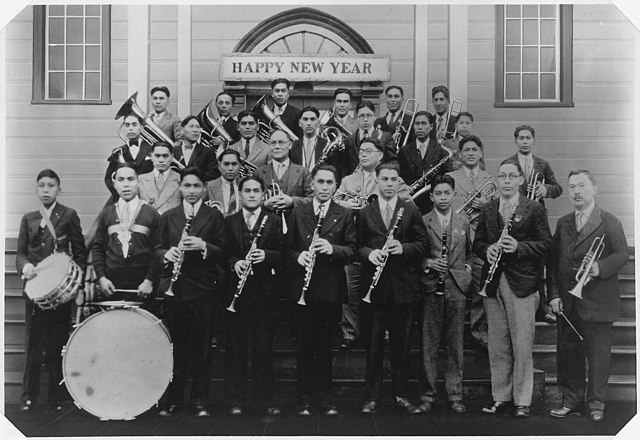Traditional Alaskan Native religion involves mediation between people and spirits, souls, and other immortal beings. Such beliefs and practices were once widespread among Inuit, Yupik, Aleut, and Northwest Coastal Indian cultures, but today are less common. They were already in decline among many groups when the first major ethnological research was done. For example, at the end of the 19th century, Sagdloq, the last medicine man among what were then called in English, "Polar Eskimos", died; he was believed to be able to travel to the sky and under the sea, and was also known for using ventriloquism and sleight-of-hand.
Yup'ik medicine man exorcising evil spirits from a sick boy. Nushagak, Alaska, 1890s.
Alaska Natives are the Indigenous peoples of Alaska and include Alaskan Creoles, Iñupiat, Yupik, Aleut, Eyak, Tlingit, Haida, Tsimshian, and a number of Northern Athabaskan cultures. They are often defined by their language groups. Many Alaska Natives are enrolled in federally recognized Alaska Native tribal entities, who in turn belong to 13 Alaska Native Regional Corporations, who administer land and financial claims.
Alaska Native dancer performing in Fairbanks
Alaska Native Languages
Yupik mother and child, Nunivak Island, c. 1929; photographed by Edward S. Curtis.
Metlakahtla brass band





